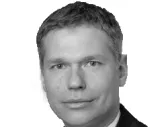The role of CCPP in the Asian power market – Providing the power for a prosperous future
By Thomas HagedornIn recent years, the Asia-Pacific region has emerged as a strong driver of worldwide economic activity. With young and skilled workforces, countries in the region are experiencing sustained and solid growth, driven no longer just by exports but also by increasing domestic demand within the region.
This has led to continuous increases in power demand of approx. 6% per annum. This requires new generation capacities to be built today to meet the rising demand in the years ahead. In addition, significant amounts of generating capacity are coming to the end of their economic life and need to be replaced in the same timeframe.
Care has to be taken when making the investment decision as today’s power plant solutions shall be capable of running profitably throughout the whole service life, which in the case of combined cycle power plants is typically more than 20 years and even longer for coal and nuclear plants.
Therefore, customers expect environmentally-compatible and economical state-of-the-art solutions, which offer a maximum value and long-term investment security, even in a volatile market environment.
As another factor to be considered, Asian populations are becoming more environmentally aware, as witnessed by popular resistance against construction of nuclear and coal fired power plants in Thailand and Indonesia.
Renewable power generation in the Asia-Pacific region is also only starting to emerge and will require some time before it will play a significant role in the energy mix. It is further limited by geographic and climatic conditions since for the majority of countries in the region the wind is not blowing strong and steady enough and the sky is often overcast so reducing direct solar radiation.
Therefore, the potential for wind and solar power.is quite restricted, leaving only hydro and biomass as potential for large scale renewables.
In contrast, natural gas availability in the region is growing strongly, in particular through the continuous addition of LNG terminals. Also, the discovery of unconventional or shale gas around the world will make LNG as a fuel for power generation more and more viable.
Therefore, gas fired power generation will play an even larger role in securing the energy supply of the region. Even today, in peninsular Malaysia more than 35% of the energy mix is based on gas. Thailand’s share is even higher at more than 65%, and Singapore currently has the highest percentage at 78%.
Korea is currently in the process of upgrading its power generation infrastructure with the latest generation of Combined Cycle Power Plants, such as the recently signed extension of POSCO Energy’s Incheon plant with three SCC6-8000H blocks providing more than 1200 MW.
Japan has recently signed long term supply agreements for LNG and is expected to upgrade its generation facilities to the newest technology also.
In most countries in Asia-Pacific, Combined Cycle plants are responsible for covering a significant portion of the country’s base load. During this load regime highest efficiency is a key requirement to drastically reduce fuel consumption and of course also reduce CO2 emissions.
As an example, an efficiency improvement of 1.5%-Points leads to a fuel gas saving of 14,700 tons per year and a reduction in CO2 emissions of 41,000 tons per year, which consequently increases the profitability while minimizing the environmental impact.
Besides having the highest efficiency and lowest CO2 emissions of any thermal power plant technology, combined cycle power plants are able to offer highly flexible solutions that can accommodate sharp fluctuations in power consumption.
One of the major drivers for highly flexible CCPP is the particularity of the Asian grids, which due to geographic, economic and geostrategic reasons are rarely part of an interconnected larger network.
In this case an adequate reserve is essential in order to compensate potential power supply interruptions in order to avoid black outs. Therefore power plants participating in the energy supply have to fulfill very stringent grid codes (similar to the UK Grid Code) in order to ensure an effective stabilization of the grid.
This can be achieved by maintaining a spinning reserve, but also using power augmentation technologies like cooling of compressor air intake, water injection (wet compression) or duct firing, which provide a quick increase in power output and can be tailored to the specific customer requirements as part of the development of the power plant project.
The evaluation of the different regional requirements leads to the following key drivers, which were the basis for Siemens to develop the SCC-8000H series as the answer to the current and future energy supply needs:
Performance: Increase the combined cycle net efficiency to over 60% with a power output over 550 MW per shaft, while drastically reducing fuel consumption and emissions while achieving highest reliability and availability.
Investment: Lowest specific investment ($/kW) resulting from economies of scale and integrated project management
Operational flexibility: A plant designed by the OEM from the ground up so that all components interact perfectly in order to provide minimized startup and shut down times, maximized load ramps for fast load following ability, with improved turn down capability, part load efficiency and start reliability
The newest CCPP generation of the SCC-8000H series, already proven in more than one year of commercial operation and receiving several orders in ASEAN, addresses even the most challenging market requirements and therefore delivers a significant benefit to strengthen Asia’s economic boom while enabling most efficient fuel consumption.









![Cross Domain [Manu + SBR + ABF + ABR + FMCG + HBR + ]](https://cmg-qa.s3.ap-southeast-1.amazonaws.com/s3fs-public/styles/exclusive_featured_article/public/2025-01/earth-3537401_1920_4.jpg.webp?itok=WaRpTJwE)
![Cross Domain [SBR + ABR]](https://cmg-qa.s3.ap-southeast-1.amazonaws.com/s3fs-public/styles/exclusive_featured_article/public/2025-01/pexels-jahoo-867092-2_1.jpg.webp?itok=o7MUL1oO)









 Advertise
Advertise


